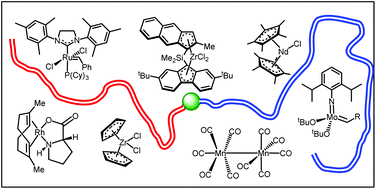End-functional polyolefins for block copolymer synthesis†
Abstract
Polyolefins that contain polar functionalities are highly desired because they could extend the range of applications of these low production cost materials by modifying surface and other interfacial properties. Block copolymers containing polyolefin and polar segments are among the most sought-after architectures because of their ability to span the phase boundaries. This review focusses on the end-functionalisation of polyolefins by catalytic olefin polymerisation processes, almost invariably by metal-catalysed routes, followed by the growth polar blocks by various polymerisation techniques.

- This article is part of the themed collections: Challenges in organometallic & coordination chemistry: in celebration of Geoff Cloke’s 65th birthday and 2019 Frontier and Perspective articles


 Please wait while we load your content...
Please wait while we load your content...